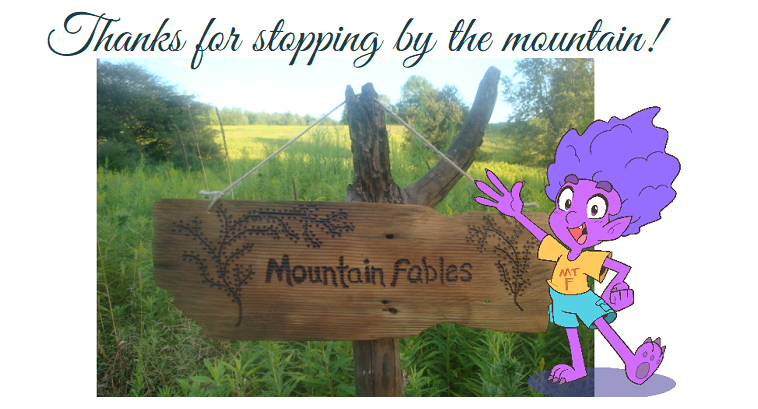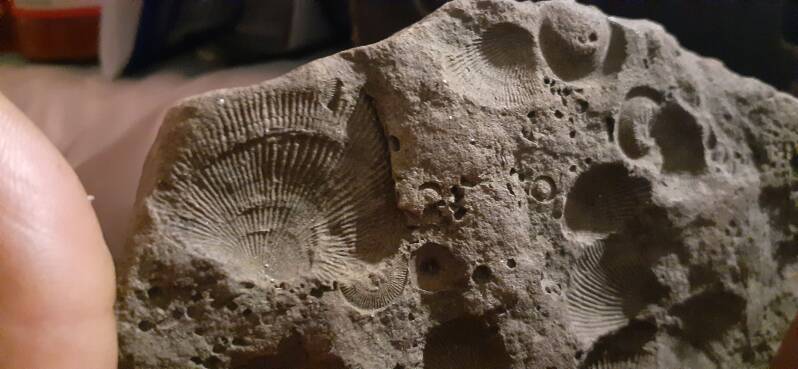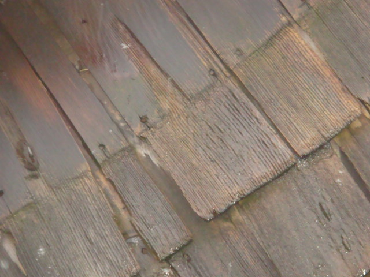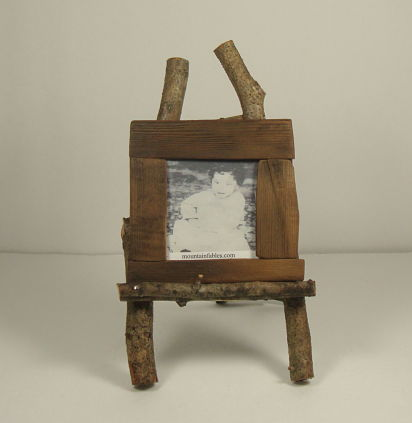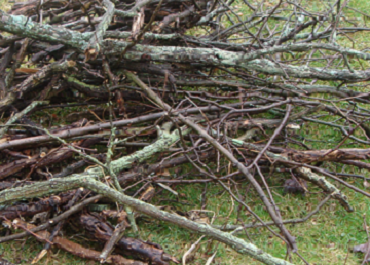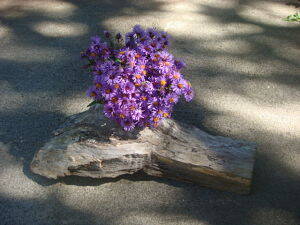
ABOUT

The Mystery Unveiled!
Here you will find the answers to questions like.....
- Where am I?
- Just where is Mountain Fables?
- What does Mountain Fables have to do with Ms. J's Mountain?
- Who is Ms. J?
- Who besides Ms. J lives there?
- Why is everything so outdoorsy?
- And finally - How do I get there?
Where is Mountain Fables?
Who is Ms.J

Hello: My name is Jelani K. Asantewa
(AKA) Ms. J
Who besides Ms. J lives there?
It's just me, myself, and I - Along with anyone I welcome into my world through my art. Mountain Fables is a mythical place residing deep within my imagination! It is a frame of mind that I enter when I take my walks. There are many real and imagined stories that awaken my creativity as I hike it's fields, its gullies, its woodlands and its meadows. Each encounter inspires a different artistic part of me: art, creative and technical writing, photography, gardening and pondering. Ms. J's Mountain is the home that binds all of my Mountain Fables inspired works and whims together, under one roof.
MOUNTAIN FABLES

TRAILS
Horse and wagons once traveled a trail through the woods which was said to have been a through road in the 1800's. Through to where? To an adjoining neighbor's farm? To a county road, that was once itself a trail to the next town over? Who used it? When was it made? When and Why did they stop using it? Long forgotten as a thoroughfare, with no official records, this time warn road holds many opportunities for the imagination to run wild.
ROCKS
I have always loved rocks. Common field stones/rocks are "precious stones" to me. You will never, ever, find two that are exactly the same. So, finding rock piles is a special treat! There are rock piles scattered deep in the woods. Surely a mystery waiting to unfold. Did an alien landing upend and earth, breaking rock and leaving them exposed and strewn about? Maybe the piles were caused by a sudden rumbling or small quake of the earth that caused an upheaval of rock from beneath. Chances are there is a more rational explanation for this phenomena!
ROCK PILES
The clearing of stone from the adjoining field in preparation for planting and harvesting is most likely the source of these rock piles. But why is the pile in the woods? Because the woods used to be part of the adjoining field! Over my many years on the mountain I have seen unkept field edges slowly turn to woodlands. How could that happen?
There are many ways.
- Trees, shrubs and weeds at the edge of the woods drop seed or spread by rhizome roots and each new plant repeats the process.
- Wind and rain spread seeds.
- Animals spread seeds by dropping seed while eating or while transporting their food to another location. They may burying food for storage and not return to retrieve it, (Why don't they retrieve it? Like us did they forget where they put it? Did they collect to many and not need it any more? Did they die? How? They may defecate seeds they have eaten. They may carry "clingers", seeds that cling to their bodies as they pass by, then eventually drop off. I call this animal transmittal. But the scientific name is zoochory. Zoochory is broken down by category of how the transmittal takes place. Each category has a scientific name, of course!
That explains the vegetation. But why were the field edges unkept and what does that have to do with rock piles?
Now....
Back to those rock piles in the woods.
Picture a farmer, perhaps decades or even centuries ago, plowing their field with a tractor or walk behind plow before tractors. They are braking sod and unearthing many stones. These stones must be removed to create a smooth tilling, planting and harvesting surface. So, the farmer and their helpers diligently toiled to remove as many stones as possible. More perfect stones were placed on a wagon and carted away to become stonewalls, foundations, chimneys, steps, sidewalks or decorative interior and exterior housing veneer. An occasional stubborn boulder; which was to heavy, buried to deep or was an upheaved part of an extended underground rock structure, had to be left in place. The remaining undesirables stones were then caste away. They were were thrown into a pile on the edge of the field.
At the edge of the field they were out of the way but could easily be retrieved if the need should arise. Say for a doorstop, book ends or maybe a bed warmer on a cold winter's night. Meanwhile, years pass. The edge of the fields become neglected because the rock piles are in the way of tilling or mowing. The field edges become overgrow with woodland plants that take root in the various means listed above. As time goes by the mother field grows smaller as the renegade woods advance further into the clearing.
Enter imagination!
Did the farmer have helpers to clear the field of stone? Were the helpers family? Immediate or extended? Was it a big family? Were there lots of sons? Did the female members help? Did kids miss school to get this job done (like on tv)? Were the helpers friends that chipped in and helped clear each others fields? Were there hired hands? Was it a combination of all these helpers? How long did it take? Was the walk behind plow horse or man powered? Was it a tractor, what make, new and shiny or old and worn? Exactly what year was this rock pile made?
How old are the stones and how did each one come to have its shape? What about the stones with fossilized sea organisms molded into them? Zillions of years ago the earth was said to be covered with great bodies of water. Perhaps that included each place I find a fossil. But if so, why aren't there lots more? Did someone or something carry it to this final resting place? Or.... Was it aliens? Such are the questions that live on the mountain.
Rock Pile 2014
Jelani K. Asantewa
Field Stone, Stream Stone
One more field ready to plant.
One of my many guilty pleasures is finding a rock pile in the woods. Placing rock piles high on my artistic inspiration list.
LIFE
It is a calming joy to watch butterflies wistfully frolic among the flowers. In our simple human imaginations they always appear to be perfectly peaceful and to be frivolously having fun. Just drinking nectar and transferring pollen between plants for us. But are they? Do they have work pressures just like us.... "Have to find more nectar!" "Is there a bird lurking nearby?" "It's awfully chilly for a summer day, is fall coming early?" "This flower's nectar tastes weird."
We don't really know the answers, until one day when one very special butterfly happens by. It is only then that our human pea-brains can rationalize that their day is not always perfect and that, yes, they too have day to day trials and tribulations.
AT THE TOP 2013
Jelani K. Asantewa
Found Stone
The climb to the top can be a hard one. But once there it is very satisfying, Enjoy!
One beautiful Swallowtail Butterfly (I think it had a tail) with damaged wings proves that not every day is perfect for these creatures that we view as wistful and carefree. My imagination was immediately unleashed when I saw the damage to this butterfly's wings. What in the world could have happened to this poor thing? Big chunks of both wings had been ripped away. Was this devastation caused by a human, animal, insect or an inanimate object? Did it happen all at once or was it different occurrences? I can only imagine the horrifying scenarios that are possible. How is this butterfly still flying?
But, after imagination had run its course, inspiration set in. This old timer, (I call it "old timer" because it somehow had beat the odds against whatever had happened to it), floated from Autumn Joy flower to Autumn Joy flower as if the damaging experience had never happened. Whatever terrifying events had ravished its wings, the butterfly was over it and was back to the business of everyday life. Not only could it fly, but it was very graceful and peaceful looking as it took its time among the flowers. This battle worn butterfly has become my inspiration. It is a living allegory for resilience from hard times.
AGED WOOD
Any kind of aged wood! The older the better.
Weathered and timeworn barnwood holds endless character. It is my imagination's gateway to a trip through time. Wooden Roof Shingles from an old horse barn brings back memories of when the barn was used to shelter the workhorse of a logger that was hired to log our property when I was a child. Fallen branches and twigs with beautiful insect trails carved beneath their old and peeling bark are treasures I am always fascinated by. Yes, I even think about the insects that caved them, where were hey headed and what they were thinking as they carved their trails! Laths, from the inner walls of old buildings with intriguing stories to tell. New wood is beautiful, but old wood has its own, individual aesthetic that only time can create.
TREE HOLES
When I see a tree with a hole in it, "upper deck" or "lower deck" it fascinates me! Often I pass interestingly twisted tree roots or leaf covered tree trunks with obvious "house holes" tunneling into or beneath them. Some are natural holes formed in the trunk of the tree. Who lives in these holes? Is it the home of some small, cute furry animal? A cute bird? A small reptile of some sort? Could a shy or reclusive fairy, a pixy, maybe a gnome call this place home? Or, perhaps the neatly placed hole is the home where a small mountain troll spends peaceful days and rests its head at night!

Mountain Troll Art by Mr. Sai
Some of the Holes Where Fables Live.
HORTICULTURE
I love a good landscape, whether walking or riding. Landscapes are picturesque and each one holds a history of its own. From a car landscapes are beautiful but fleeting. However, when walking they hold not only history but also treasure. Sometimes it is a rock, and sometimes a branch. And then sometimes it's a... PLANT!
It is always a thrill to see all the beautiful wild flowers in their various stages; new growth, mature and their seasonally dried remains. I have found many a pleasant surprise to add to my ornamental flower gardens. Comfrey is a cherished addition that I found growing wild on a farm where I used to pick blueberries over 45 years ago. Some other finds have been Wild Yarrow and Wild Spearmint. Finding Wild Spirea was a really exciting treat, especially after having purchased several bushes in seasons prior. Then there was the attractive, wonderfully smelling Siren. A wild white rose that bush I found at the edge of one of our fields. Much to my chagrin I took a root cutting for my garden. It turned out to be incredibly invasive and extremely prickly!

However, disappointments are few. With the exception of "The Siren" I have no regrets. There is only the inspiration and joy that finding fresh and dried vegetation has bought me.
"Where Imagination Meets the Wild"
Part of the joy of making a piece of art is in finding the item which inspires it. Every dried or living plant, quiet rock, fallen branch or passing creature which lives within Mountain Fables has an artful beauty about it. And each has a mysterious history that provides inspiration for everything I do.
As the saying goes... "If the trees and rocks could talk." (At least that's the way I say it.)
There are many static and moving parts that form Ms. J's Mountain.
Mountain Fables is the place where they all live and the place that binds them together.
Ms. J

